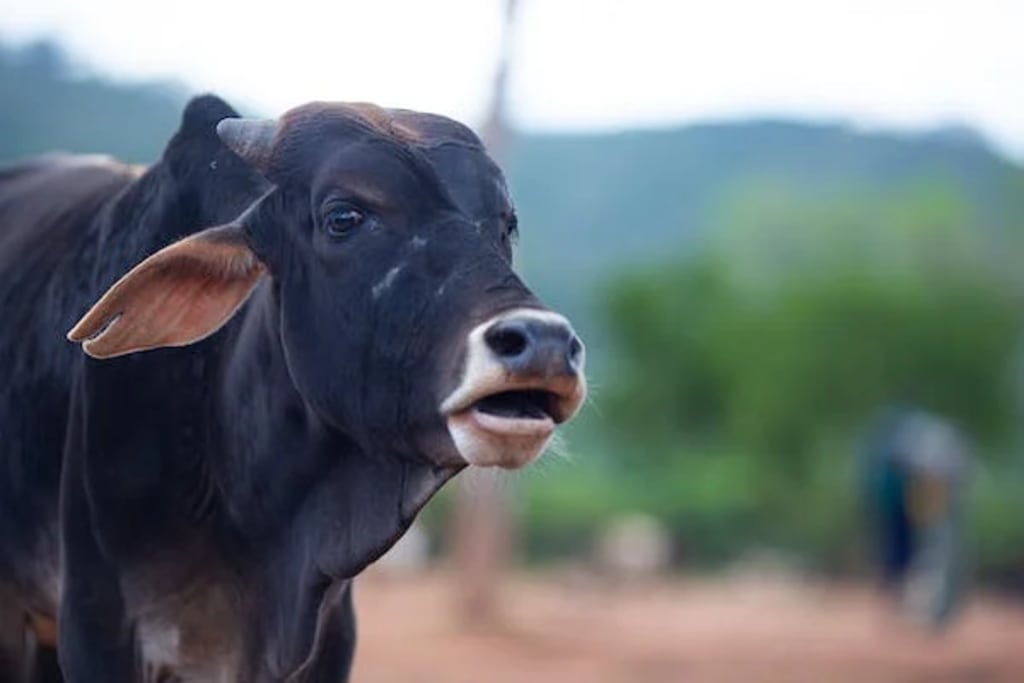10+ Jobs That Take a Lifetime to Master
From the Art of Japanese Calligraphy Brush Making to Olive Wagyu Cattle Raising

In a small town in Japan's Hiroshima prefecture, the art of calligraphy brush making thrives thanks to the dedication of Yoshi Yukihata and his family-run workshop. For over 90 years, they have been crafting flawless calligraphy brushes using a meticulous process that demands a lifelong dedication to the craft.
Yoshi Yukihata's journey as a brush maker started during his teenage years, and for the past 20 years, he has been honing his skills to achieve the level of mastery he possesses today. His craftsmanship is unparalleled, as he spends years collecting and combining only the best hairs to create each brush. Even the tiniest imperfections are removed with utmost precision.
The process of brush making begins with the careful selection of different types of hair, with Yoshi Yukihata specializing in the prized goat hair that is soft, durable, and excellent at retaining ink. However, this high-quality hair has become scarce and expensive in recent times.
Once the hairs are chosen, they undergo a series of steps, including boiling and combing to remove any fluff. The most time-consuming and delicate part is aligning all the hairs to create a uniform brush, a skill that comes with experience and intuition.
After the hairs are aligned, Yoshi Yukihata wets them and expertly combines different bundles to create dense and durable brush tips. An adhesive liquid made from seaweed called "fionori" is used to bind the hairs together.
The finished brush tip, once dried, undergoes another meticulous step where the ends are tied up and carefully burned with a hot iron to secure the hairs together. Any mistake at this stage could ruin weeks of work.
Each brush handle is custom-made to complement the brush tip. This attention to detail, along with the high-quality materials used, makes these calligraphy brushes significantly more expensive than mass-produced ones.
In Japan, calligraphy is a respected art form with centuries of tradition, but the number of skilled brush makers is declining. Yoshi Yukihata, as a third-generation brush maker, represents a shrinking community of artisans who preserve this ancient craft.
The artistry of Yoshi Yukihata's calligraphy brushes extends to other corners of the world, where craftsmen like him are committed to noticing the little details that make their work truly exceptional. From an amateur historian in Tunisia reconstructing an ancient purple dye to a Damascus knife bladesmith's refusal to give up after failing the Mastery exam, artisans worldwide share a dedication to their crafts that sets them apart.
While challenges exist for traditional crafts like brush making and dye production, the passion and dedication of artisans like Yoshi Yukihata and his family ensure that these art forms continue to thrive, passing on their knowledge to future generations.
Momotaro genes are typically made on automated looms, but the most expensive Gold Label jeans are produced with an even slower, more traditional method - by hand with an antique loom. Kazuki Akita spends one hour weaving just 10 centimeters of fabric, adding extra effort that gives the jeans a unique feel.
Denim enthusiasts travel from Thailand to Tokyo to buy Momotaro's priciest pair. Unlike regular jeans that may feel stiff at first, these jeans are remarkably comfortable from the start, as if you've been wearing them for a while.
After the fabric is woven by hand on a shuttle loom, it moves to the sewing room. Most other types of denim weigh between 11 and 14 ounces, while Japanese denim, like Momotaro's, weighs 20 ounces. The heavier fabric makes Naomi Takebayashi's job more challenging.
One of the cornerstones of Japanese denim is the artisanal nature of the way the jeans are formed. At Momotaro, all the stitching and copper rivets are added by hand, ensuring attention to detail.
In Kojima, considered the birthplace of denim in Japan, Momotaro is one of around 40 denim makers. Although the denim industry hasn't been prominent in Kojima for long, Japanese denim has gained international recognition as one of the finest in the world, with artisans expressing their skill through the visual details of the craft.
Similarly, the process of creating Damascus knives showcases the skill of master bladesmith Zach Jonas. To achieve the striking swirl patterns, Zach twists a red-hot fusion of steels, creating strong and sharp knives with visually stunning designs.
In contrast, the art of crafting iron kettles in Japan is a meticulous and manual process. Artisans like Nobu meticulously make molds, pour molten iron, hammer, and apply lacquer coatings, creating unique kettles that are cherished for their aesthetics and quality.
In Korea, bronze Yugi, known as Banja Yugi, is a traditional craft passed down through generations. Master smith Lee Bong Joo, a living National Treasure, handcrafts Banja Yugi using traditional methods, which require immense skill and experience.
Lastly, Peter Bellerby's passion for creating one-of-a-kind globes turned into a business. Each globe is custom-made, with Artisans hand-painting each country and crafting unique bases, making them exclusive and sought after.
These crafts showcase the dedication, skill, and artistry of artisans who create unique, high-quality products that are appreciated and valued by enthusiasts around the world.
Peter Bellabee founded London's Bellabe and Co Globe makers in 2008, and today it is one of the few studios in the world crafting globes by hand. Their product range includes a variety of meticulously crafted globes, from the 12-centimeter diameter pocket Globe that sells for nearly two thousand dollars to the grand 127-centimeter diameter Churchill Globe, which can cost over eighty thousand dollars.
Since its establishment in 2008, Bellabe has sold approximately 5,000 Globes, featuring maps of Earth, constellations, and even the Moon. Some of their works were showcased in Martin Scorsese's Hugo, including a 40-centimeter Celestial Globe.
Creating these globes is a laborious process, requiring a team of cartographers, glow makers, painters, and woodworkers. The attention to detail is extraordinary, starting with the perfectly spherical shape, often made from fiberglass for strength and durability.
The cartography department focuses on accuracy and customization, highlighting specific details like migration routes, ancestral origins, and geopolitical borders that adhere to legal requirements in different countries.
The process of making a globe from scratch by hand is time-consuming and demanding, often taking up to 18 months for trainees to learn the basics and years to master. The intricate work of applying the map onto the globe's surface, ensuring precision and consistency, is particularly challenging and must be done with utmost care.
Bellabe's focus on quality craftsmanship and attention to detail is reflected in the price of their globes. The cost is a result of the extensive labor involved, the materials used, and the exclusivity of their handmade products. Despite the high price points, Bellabe continues to experience growing demand, driven by consumer interest in unique, handmade products.
Similarly, in other parts of the world, artisans are dedicated to their crafts, pursuing perfection and uniqueness in their products. For example, in Japan, a sixth-generation matcha producer expertly grows ceremonial grade matcha, using traditional methods that take time and patience. In Spain, Eduardo Sosa raises geese ethically to create foie gras, and in Japan's Shodoshima Island, Masaki Ishi developed Olive Wagyu, a variety of Wagyu beef, by feeding the cattle with olive pumice, a byproduct of olive oil production.
In all these cases, the commitment to quality, sustainability, and the use of traditional techniques contribute to the rarity and desirability of these unique products. These artisans take pride in their work and create items that tell stories and resonate with consumers who appreciate exceptional craftsmanship.
About the Creator
Enjoyed the story? Support the Creator.
Subscribe for free to receive all their stories in your feed. You could also pledge your support or give them a one-off tip, letting them know you appreciate their work.





Comments
There are no comments for this story
Be the first to respond and start the conversation.